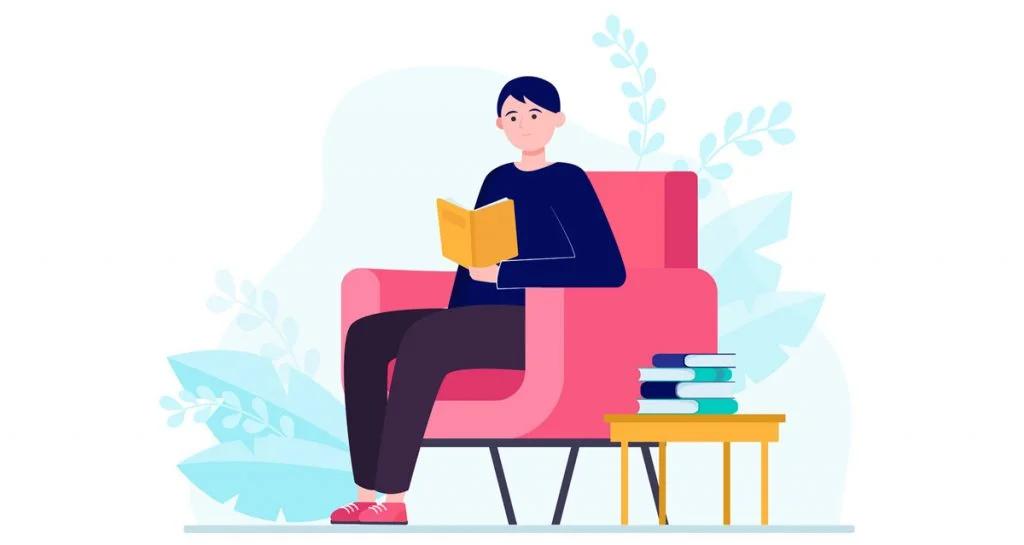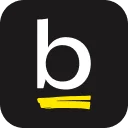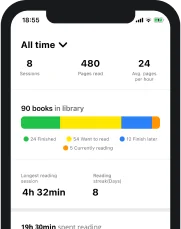Learning how to properly use skimming in reading can have a positive effect on your reading speed and overall performance. Yes, skimming generally has a bad reputation, but it can be a very effective and useful reading strategy when used in the correct way.
Here at Basmo, we are committed to exploring all aspects of reading and providing you with all the information you can possibly need in order to become the best reader you can be. Whether you want to improve for personal gain or because your assignments are forcing you to always give 110% in school or in your career, using reading strategies can be your much-needed lifeline.
Learning to properly skim through a book is a great way to start an active reading session, but there are a couple of very important things you need to keep in mind. Here’s everything you will ever need to know about skimming as a reading technique.
What is skimming in reading?
The Cambridge dictionary defines “skimming” as the act of reading or simply looking over a text quickly in order to get a vague understanding of it.
By its definition, the skimming reading strategy is a technique that involves a quick scan of a text with the purpose of identifying the main ideas, important elements of its structure, key points, and relevant concepts in a short period of time and without reading every single word.
What sort of reading is skimming?
Skim reading is a superficial reading technique. It requires little effort and a low level of involvement on the reader’s part. When used correctly, skimming is actually a precursor of an active or analytical reading session. Skim reading alone is generally not seen as a very productive way to read, since you won’t be able to absorb too much relevant information. Skim reading can be effective, for example, in determining whether a book should be read or not.
What is the purpose of skimming reading?
The main purpose of skimming a book is to gain a vague understanding of it as a whole, its content, and some of the main concepts the book is about. Through skimming, you can easily decide in just a couple of minutes if a text is relevant to your particular needs and whether you should invest the time and energy into reading it in its entirety.
Another reason why skimming is an important skill for a reader to possess is that it can provide a very useful foundation for an upcoming analytical or active reading session. Through skimming, you can evaluate the content and the structure of reading material, which in turn will make comprehending and remembering said material quicker, easier, and more efficient.
What are the benefits of skimming in reading?
Learning how to skim read effectively can come with a series of very important and relevant benefits. Here are some of the most popular reasons why readers tend to use skimming:
- It saves time. Going over a book or reading material quickly to extract the main information from the content is clearly a lot quicker than reading the entire book in detail. On top of this, skimming can be a very valuable resource in helping you decide if a particular book is going to meet your standards or if the information you are looking for can be found in its content.
- It is efficient. When done right, skimming can be an extremely powerful tool. Learning how to skim and becoming proficient in this skill can give your learning habits a massive boost. For example, if you want to explore a particular topic you need to research from multiple sources for maximum accuracy, skimming can be a great way for you to extract the main ideas from several books in a short period of time instead of reading several books in their entirety, which can take days.
- It can improve reading comprehension. Skimming can provide you with a very relevant framework for your upcoming analytical reading session. It can give you a quick overview of the material you are about to study, it can outline the structure of the content, where you will find the most relevant information, and will help you determine a clear purpose for your reading session.
As you can see, understanding its benefits plays a huge role in understanding the importance of skimming in reading. Knowing how and when skimming can provide you with benefits or add value to your reading session is definitely going to give your reading experience a boost in performance and efficiency.
How to skim read?
Learning how to skim read effectively is a very important skill to acquire. There is a very important difference between skimming and reading superficially, so in order to avoid making any mistakes, have a look at our step-by-step skimming guide.
Step-by-step guide to skimming efficiently
- Determine your goal. It’s crucial to know why you are reading the material and what information you are looking for before you start skimming. This will guide your skimming strategy and help you concentrate your attention on the passages that are most important to your purpose.
- Preview the text. Spend a few minutes scanning the headings, subheadings, and any graphs or illustrations before jumping into reading. This will guide your skimming strategy and help you concentrate your attention on the passages that are most important to your purpose.
- Read the introduction and conclusion. These are generally very good places to start because the introduction and conclusion of a book or reading material usually include a summary of the key information presented, concepts explained, or other key terms.
- Skim the body of the text. As you go through the reading material, scan the pages for bolded words, bullet points, headings, and subheadings. Reading the table of contents is usually quite revealing as well. All these elements often make finding relevant information quite quick and easy. You can also try reading the first and last sentences of each relevant paragraph to get a sense of its main idea.
- Take notes as you skim. Taking notes while skimming can make the difference between actually skimming and simply reading superficially. Jot down the important information you manage to discover while skimming, what you are hoping to learn, and any other information you think is relevant.
What are the types of reading skimming?
Learning how to skim a book properly means getting familiar with a couple of different skimming techniques. All these skimming types serve a relatively different purpose, and understanding why each one is important in its own way is going to give your reading habits a much-needed boost.
- Structural skimming. This type involves looking at the structure of the content. Structural skimming refers to the process of having a look at headings, subheadings, table of contents, and chapter names. Through structural skimming, you will familiarize yourself with the way the book is organized and where the relevant information can be found.
- Content skimming. This is the process of quickly scanning the actual content looking for particular pieces of information or trying to get a sense of the reading material
- Speed skimming. As the name suggests, this type of skimming is defined by the reading speed involved. Speed skimming refers to the process of going through a text in the shortest time possible, without paying attention to details, just to get a vague idea about the main topics.
- Detail skimming. Through this process, you will slow down a bit. Even though you will still not read a text entirely, you are going to actually look for specific information by scanning the text.
How to use skimming reading strategies?
There are several ways you can use skimming successfully as part of an active reading session. Skimming strategies can be mainly classified in three categories:
- Preview skimming, which is generally followed by thorough reading. This strategy is generally effective in helping you decide whether you should read a particular book, surveying a chapter before diving into it, and finding research material
- Overview skimming. This skimming strategy is ideal in cases when you know for sure that you have no intention to ever go through a particular reading material in depth at any point in the future.
- Review skimming. This is the ideal strategy to use when re-reading a certain material just to refresh your memory
When do we use skimming in reading?
Skimming is generally used in several particular situations:
- When your time is very limited and you need to quickly gather essential information from a reading material
- When you need to go through a very complex text or reading material, skimming it first can provide you with a much-needed framework for your upcoming analytical reading session
- When you are reading a book or text on a topic you are not familiar with at all.
How to use Basmo for more efficiency
Basmo can be an extremely powerful tool for the modern reader. Our reading tracking app has been especially designed to solve a multitude of problems readers may face nowadays. When it comes to reading actively or analytically, we generally need all the help we can get. Skimming can be a great way to start an active reading session, and the experience can be massively improved by Basmo. Here’s how.
Taking notes is easy and effective. While the skimming reading definition clearly states that this reading technique relies on speed and a certain level of superficiality, there is no denying the fact that it can benefit from diligent note-taking. With Basmo, nothing is easier. Every time a reading session is active, the note-taking feature becomes available and you can simply start typing.
Reading stats at your fingertips. Whenever we’re thinking of skimming reading examples, the one thing they have in common is the fact that they require a relatively high reading speed. To monitor your reading speed and ensure that you are always skimming with a high degree of efficiency, Basmo tracks a whole bunch of metrics whenever a reading session is ongoing.
Give Your Reading Experience
An Extra Boost With Basmo
Track the books you read, monitor the time you spend reading and keep notes on your reading habits and how it makes you feel. You can set yourself targets for the time you spend reading and you can get notified whenever you’re behind on your reading time.
Frequently asked questions about skimming
Since the skimming meaning in reading is oftentimes relatively misunderstood, there are quite a lot of questions that tend to arise among readers on this subject. Luckily for you, we have all the answers.
Is skimming critical reading?
No. Depending on the technique and the purpose of the skim reading session, skimming can be a part of a critical reading process.
Is skimming a reading strategy?
Yes. When done correctly, skimming is a very useful reading strategy.
Is skim reading bad?
Sometimes, it can be. If skimming becomes too much of a habit and is not part of an active reading strategy, it can be a nasty habit. Reading superficially with no other purpose than to get the reading over with is generally not something you should sustain over long periods of time.
How to stop skimming while reading?
Losing the habit of skimming when a deeper reading process is required can be a difficult thing to do. There are several ways for your fake reading habits to be addressed and fixed, including diligent note-taking, visualizing, and minimizing distractions.
Is skimming a form of speed reading?
Yes. Comparing skimming vs speed reading can quickly indicate that the processes are similar enough. Skimming is usually done to grasp some concepts superficially before diving into a deep reading session though, so there are some differences.
Final thoughts
So, what does skimming mean in reading? It is generally seen as a superficial process that precedes an active reading session, done with the purpose of preparing yourself to a certain extent for the things you are about to learn. With Basmo, you can take full advantage of skimming, try it out.
Image by Freepik







